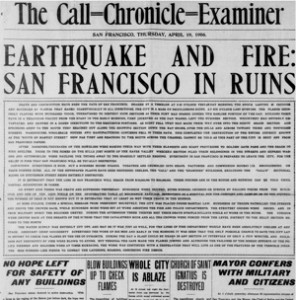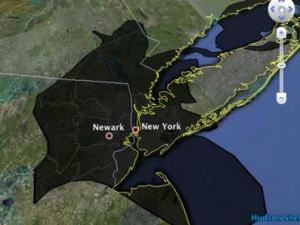Arizona Governor Jan Brewer has signed into law a bill passed last month by the State Legislature that will privatize Arizona’s workers compensation fund. The State Compensation Fund (“SCF”) was created in 1925 to provide workers compensation insurance for employers located in Arizona. It has operated as a nonprofit agency under the supervision of a board of directors appointed by the governor. But beginning January 1, 2013, SCF will be a mutual insurance company with ownership of all the Fund’s assets and liabilities. The Fund currently provides coverage to 40,000 Arizona businesses and with a market share of 31.5%, it is the state’s largest workers comp underwriter. Once privatized, the Fund will be subject to the same regulations as private insurers and will no longer be able to use the terms “state compensation fund” or “SCF” in its name, logo or other marketing materials. I welcome the privatization of state workers’ compensation funds, as it reduces the opportunities for political interference in the operation of these funds. With states experiencing serious budget deficits, the assets held by state funds and the premiums they collect present attractive targets for politicians desperate for funds. The state should get out of the workers compensation business and Arizona is leading the way.
Archive for May, 2010
Arizona Privatizes Its Workers Compensation Fund
Sunday, May 16th, 2010U.S. Chamber of Commerce Addresses Taxation
Friday, May 14th, 2010The U.S. Chamber of Commerce issued a statement on access to capital for small businesses directed to the Congressional Committee on Small Business, the Subcommittee on Finance and Tax. The statement sets forth two policy recommendations that are particularly important at this time. First, Congress passed legislation calling for a 3% tax withholding on all government payments, which affects government contractors. While the requirement will not go into effect until January 1, 2012, businesses and federal, state and local governments are spending funds to prepare for its implementation, which expenses the Chamber believes to be unnecessary for a requirement that should be repealed. The Defense Department estimates the cost of compliance with this requirement to be $17 billion over the first five years, exceeding any forecasts of revenue gains. For small businesses that contract with the federal, state and local governments, this onerous requirement should be repealed. Second, the Chamber argues against raising tax rates, reminding Congress that many small businesses are organized as Subchapter S corporations or sole proprietorships, such that increases in personal tax rates increase their cost of capital. This would reduce capital available to reinvest in small business at a time when banks have already choked back on lending to this sector. The Chamber of Commerce represents more than three million businesses in the U.S., of which 96% have fewer than 100 employees. Let’s hope that Congress acts on the Chamber’s recommendations.
Tornadoes Strike Kansas and Oklahoma
Thursday, May 13th, 2010Multiple tornadoes struck Oklahoma and Kansas, raining down hailstones the size of baseballs. The storms left more than 65,000 businesses and homes without power. Gas leaks, downed power lines and ground debris have created hazardous conditions in some areas. At least 60 people were injured and emergency officials believe at least two people were killed in the storm. As this is tornado season, it is worth reviewing the safety information about these powerful storms, quoted from pages 94 – 95 of Prepare for the Worst, Plan for the Best: Disaster Preparedness and Recovery for Small Businesses (Wiley, paperback, second edition, 2009):
“Although tornadoes are more common in the Midwestern states, the fact is that they have been reported in each of the 50 states in America and in countries throughout the world. Even if you think you do not live in a tornado- prone area, read this section for the safety information. On April 24, 2007, a tornado tore through Eagle Pass, Texas, causing at least ten fatalities and injuring more than 80 people. Two elementary schools were demolished and almost 300 people were evacuated to shelters. This was an area that is not associated with tornado activity!
Tornadoes are known as “twisters” because tornado winds gust at speeds in excess of 200 miles per hour, destroying everything in their path. Spring and Summer are considered the tornado “seasons,” but they can happen at any time of the year. A tornado watch means that a tornado is possible in your area; a tornado warning means that a tornado has already been sighted. An approaching tornado sounds like a speeding train. Remain indoors, away from the windows that could be shattered by the high-speed winds. If you are in a high-rise building, try to make it to the basement safely. I recommend that you avoid the elevators and take the stairs as fallen power lines could disrupt the supply of electricity to your building without warning. If you don’t have sufficient time to go to the basement or the ground floor, move to the center of the building, which is as far removed from windows on either side of the building as possible. If you are outside, go to the basement of the nearest sturdy building or lie flat in a ditch or a low-lying area. If you are in a car or a mobile home, get out immediately.
As is the case with a hurricane or a flood, remember to bring any equipment that is outside indoors. I have two friends, a husband and wife team, who own and operate a charming inn in New England. The inn caters to vacationing families, and, as such, has outdoor toys, swing sets, picnic tables, barbecues, and other items that could get swept in high winds and cause injuries. Their contingency plan calls for the husband to ensure that the items on the northern and eastern side of the inn are brought indoors when a storm warning is in effect, while the wife is responsible for the lower-weight items on the southern and western side of the inn. By assigning responsibilities, they ensure that nothing will be overlooked.
Once the tornado has passed, check your premises for damage. Be careful when you leave your premises, as fallen power lines pose a particular hazard. Don’t light matches or use candles, as there may be gas leaks of which you are unaware. Listen to the news reports to determine if it is safe to go home and which areas you should avoid on your commute home.”
Banking on Tennessee
Wednesday, May 12th, 2010On page 140 of Prepare for the Worst, Plan for the Best: Disaster Preparedness and Recovery for Small Businesses (Wiley, second edition paperback, 2009), I informed readers that when the President declares a federal disaster, early withdrawal penalties on time deposits are waived as residents and businesses will need additional cash resources to recover. Many banks are unaware of this requirement, so I recommended that if your bank is not, get the cash as soon as you need it and seek reimbursement of any early withdrawal penalties, time permitting, when you are further along in your recovery efforts. I also recommended that you immediately request forbearance on any and all loans and credit facilities. In disaster recovery mode, you will need every inch of breathing room you can get.
So I was delighted to read that Bank of America is putting into effect a disaster relief program in the 42 Tennessee counties designated federal disaster areas by the Federal Emergency Management Agency. The Bank’s disaster relief program provides that small businesses in the affected counties may qualify to avoid early withdrawal penalties on bank certificates of deposit. They may also receive emergency credit line increases on their bank credit cards and may modify or extend payments on loans, credit cards or lines of credit. This is exactly the way to proactively help small business customers in the aftermath of a disaster.
And may I make an additional suggestion to the Bank of America? In the aftermath of a disaster, many small businesses with otherwise pristine credit histories will develop blemishes on their credit reports though no fault of their own. The business will inevitably have some customers that were unprepared for the disaster and will be delayed or default entirely on their obligations, causing some strain on the business. This is the time for banks to show some flexibility and take these factors into consideration for loan applicants.
At a time when bashing banks has become politically fashionable, we should remember how they support our communities. In banking on Tennessee, Bank of America is being true to its roots. A.P. Giannini, the founder of Bank of Italy, the institution that is the predecessor to the Bank of America, saw the opportunity represented by the devastating San Francisco earthquake of 1906. As other banks succumbed to panic, his made emergency loans to customers, mostly immigrant owned businesses, earning the bank their loyalty. This cemented the Bank’s position as a leading financier to the film and wine industries in northern California.
Gulf Coast Environmental and Economic Catastrophe
Monday, May 10th, 2010The oil spill resulting from the April 20 explosion on the Deepwater Horizon now covers at least 2500 square miles of water surface. To help visualize the size of the spill, Paul Rademacher created Google Map mashups that show the spill placed over various cities. This image shows the spill if New York were the epicenter. As you can see, it is enormous, covering landmass in four states. As it is on the Gulf Coast, tar balls from the spill are washing up on local beaches with damage evident in Alabama, Louisiana and Mississippi. BP has offered US-based fishermen (the spill has not yet reached international waters) a one-month pay settlement package as compensation. All of the owners of Louisiana small fishing businesses with whom I have spoken have declined the offer, as their ultimate income loss will likely extend over a much longer period. It is important to remember that it is not just the commercial fishing businesses that will be affected. Many downstream businesses, such as seafood retailers and processing plants, face serious financial losses.
Yesterday the fishing waters in the Gulf were closed. With an annual harvest of more than one billion pounds of fish and shellfish, that equates to a lost harvest of 273,000 pounds each day. In response to this economic loss, the Small Business Administration is offering Economic Injury Disaster loans for small businesses in 13 Louisiana parishes and two Mississippi counties. The loans will offer working capital for up to $2 million at a 4% interest rate for a term of up to 30 years. Existing SBA borrowers who have been affected by the oil spill may request a deferment of their loans.
I explain the issues around the SBA’s Economic Injury Disaster Loans in Prepare for the Worst, Plan for the Best: Disaster Preparedness and Recovery for Small Businesses (Wiley, second edition 2009). I am particularly concerned in this case that insurance recoveries for the Gulf Coast fishing businesses may be inadequate to retire the proceeds of the SBA loans. Indeed, when I was just in Louisiana two weeks ago, I learned that insurance for small fishing businesses continues to remain unaffordable in the post-Katrina era. We do have a federal government fund established to finance the cleanup of oil spills. As it is funded by an eight-cent tax levied on each barrel of oil, it is insufficient for an environmental catastrophe such as this one. We need a comprehensive approach to disaster finance in the U.S. and one that is self-sustaining.
Tips for Nashville Small Businesses
Wednesday, May 5th, 2010Nashville residents are coping with an epic flood, a one-in-500 year event, and struggling for “air time” against other major events; namely, the oil spill in the Gulf Coast and the attempted bombing in Times Square. Nashville’s recovery is dependent on resources provided from elsewhere in the U.S.; the city needs and deserves our attention. Meanwhile, the following are tips for Nashville small businesses owners as to things that they must do right away to begin to recover from the flood (this is modified from an earlier blog posting on hurricane recovery issues):
1. Rapid response is critical. Many small business owners will be in a state of shock and disbelief as a consequence of the disaster. However difficult it may be, they must manage their emotions and work to restore operations as soon as possible. The choice is not whether to recover quickly or whether to recover at a more measured pace. The choice is whether to recover quickly or not to recover at all. A study of small businesses affected by the 1993 World Trade Center bombing found that of those businesses that could not restore operations within five business days, 90% of them were out of business within one year. Prioritize your business needs according to relative urgency and delegate where necessary.
2. Mitigate your losses. To establish a valid property insurance claim, you must demonstrate to your insurer that you acted in good faith to mitigate your insured losses. Consider a hypothetical example. Let’s imagine that you have returned to your property and you see broken glass about the site. You must take reasonable steps to insure that the broken glass will not injure people. Insurance companies are not very tolerant of passive policyholders who fail to act in their interests to limit losses. Limit subsequent losses to your business by taking prudent steps, such as restoring fire sprinklers or other equipment that may have been damaged by the storm.
3. Identify your implicated policies. You should invest the time and effort required to examine all insurance policies implicated in the disaster, rather than foreclose options for coverage by limiting the scope of your review. Begin with insurance policies for first-party property losses that cover direct property damage, including collateral damage and indirect property damage, such as business interruption losses and loss-related expenses. Next review all-risk policies, named peril policies, business owner’s policies, policies covering particular endorsements, valuable papers and records policies.
4. Provide timely notice. Your business owner’s policy likely requires you to provide timely notice to your insurance company of covered losses. Do not forfeit indemnification for a covered loss by failing to give timely notice. If you are in doubt as to whether an item is covered by your policy, err on the side of caution and include it in your claim.
5. Report the facts, don’t diagnose the cause. Think of the words of Sergeant Joe Friday, “Just the facts, ma’am”. Here is an example of why you should not be a diagnostician. A sole proprietor worked from her home near the World Trade Center on 9-11 and experienced a systems crash. She concluded that the crash was most likely due to the loss of electrical power that was the result of the terrorist attack and so notified her insurer. Because her policy did not include an endorsement for interruption of electrical supply, that portion of her claim was denied. In fact, the damage to her computer was the result of soot and ash clogging the fan of her computer, a peril that was covered by her policy. The denial of coverage and dispute that followed could have been avoided had she sent a description of the problem without the diagnosis. Had the insurance adjuster inspected the damaged computer, he would have seen the soot and ash in the machine and likely authorized payment on the claim. Her hasty diagnosis resulted in a denial and delay of her claims payment.
6. Inspect your IT and other electronic assets at least twice to ensure that you have not overlooked anything. I began hearing unpleasant grinding noises emanating from my PC when I returned to my office following the 9-11 disaster. I suspect I had not heard them earlier because of the background noise outside my office as work was being done to restore electricity and other essential services. Upon closer examination, I learned that the noise signaled an imminent hardware failure. By inspecting each IT asset twice, I avoided the error of submitting an incomplete claims report.
7. Document your loss mitigation and other loss-related expenses; your business owner’s policy likely covers them. Such expenses might include overtime wages paid to employees who work to restore the business, lease payments for alternate office facilities when your primary space has been rendered unusable by the flood, costs of purchasing assets for temporary business use and so forth.
8. Get help if you need it. You are likely to experience a range of emotions following a disaster, from disorientation to shock and disbelief to grief. This is not uncommon and may continue for some time after the disaster. You won’t be able to look after your employees and family if you are run down. Get the support you need.
9. Assess your performance. Review your business contingency plan and, in particular, your employee training to identify areas for improvement so you will be better prepared for the future. You can and will learn from this difficult experience.
10. Exercise care when negotiating continued insurance coverage. Premium increases following a major disaster are not uncommon, but there are steps you can take to protect yourself. In particular, be aware of the “paying more/getting less” phenomenon in which increases in insurance premiums can be dampened by excluding risks that had previously been covered. Also, be prepared to demonstrate to your underwriter the features of your business protection plan that make your business a better risk.
Crisis Communications for Small Business
Tuesday, May 4th, 2010 I had the pleasure of speaking to a communications class offered to MBA students of New York University’s Leonard Stern School of Business. To my surprise, only two of the thirty students indicated plans for launching their own businesses after graduation. But while some choose entrepreneurship, others have entrepreneurship chosen for them. Consider the Self Employment Assistance Program of the U.S. Department of Labor, which allows approved applicants to work full-time on launching their own businesses while collecting unemployment benefits. This program arose from the recognition that the corporate sector is unlikely to generate growth sufficient to replace the eight million jobs that Americans have lost since the financial crisis in the fourth quarter of 2008. Given the risks inherent in entrepreneurship, this isn’t the answer for everyone, but it is a creative policy solution to a very serious labor market problem.
I had the pleasure of speaking to a communications class offered to MBA students of New York University’s Leonard Stern School of Business. To my surprise, only two of the thirty students indicated plans for launching their own businesses after graduation. But while some choose entrepreneurship, others have entrepreneurship chosen for them. Consider the Self Employment Assistance Program of the U.S. Department of Labor, which allows approved applicants to work full-time on launching their own businesses while collecting unemployment benefits. This program arose from the recognition that the corporate sector is unlikely to generate growth sufficient to replace the eight million jobs that Americans have lost since the financial crisis in the fourth quarter of 2008. Given the risks inherent in entrepreneurship, this isn’t the answer for everyone, but it is a creative policy solution to a very serious labor market problem.
Nashville Floods in a Recession
Monday, May 3rd, 2010When I worked in the reinsurance industry, “double-trigger” policies were the latest innovation for commercial policyholders. A powerful storm season concomitant with severe financial stress owing to a prolonged recession suggests a new market for this innovation. Double trigger policies offered more cost-effective coverage for linking uncorrelated risks. Consider an insurance company that covers policyholders in a seismically active area. It has sufficient capital reserves to pay expected claims from its own resources and so would prefer to forego more expensive reinsurance coverage to supplement its capital strength. But what if the earthquake occurs at a time when the value of the insurance company’s bond portfolio is impaired due to events in the financial markets? A double-trigger policy kicks in when two events, or triggers, occur: a defined financial event and an insurable peril. As these two risks are uncorrelated with one another, the premiums are lower than standard earthquake insurance alone. I wonder if such a product could be adapted for public insureds; certainly state and local governments are in need of assistance.
Consider that the flash floods caused by record levels of rainfall in Tennessee could not have come at a worse time. And they follow an unusually active storm season, such as the recent floods in Rhode Island, the worst in that state in the past two hundred years. At least 25 people have been killed in the southern states in thunderstorms, floods and possible tornadoes. Top Nashville tourism spots, such as the Grand Ole Opry and the Country Music Hall of Fame, are flooded. The news media have reported stories of local residents who are unemployed, lack funds for evacuation or temporary housing and could not pay for flood insurance. A disaster like this is doubly devastating when it occurs during a time of financial stress.
Times Square Returns to Normal
Sunday, May 2nd, 2010Mayor Bloomberg dined in Times Square with the men credited with averting disaster there. The men are Viet Nam veterans, work as street vendors and apparently are very observant. They altered authorities when they noticed something very unusual about an idling Nissan Pathfinder. The bomb squad responded to the alert and disabled the explosives, as police evacuated the area. The Mayor’s decision to dine in the neighborhood signals a return to normalcy that the threat has been averted. This weekend was certainly a reminder that urban life in the U.S. is no longer as secure as it used to be and underscores the importance of ongoing vigilance.
This graphic from Visual Economics says it all..
Saturday, May 1st, 2010 …and why we need to build our own businesses to create wealth. I remember once reading that a job means that you are “Just Over Broke”. Owning your own business means you can pay your self first, set aside greater funds for your retirement in a SEP-IRA or other tax-advantaged savings vehicle and start building equity.
…and why we need to build our own businesses to create wealth. I remember once reading that a job means that you are “Just Over Broke”. Owning your own business means you can pay your self first, set aside greater funds for your retirement in a SEP-IRA or other tax-advantaged savings vehicle and start building equity.
(Double-click on the graphic to enlarge it for reading.)
I recently completed the FastTrac New Venture program of the Kauffman Foundation, offered by the Levin Institute of the State University of New York with the New York City Department of Small Business Services. I am to complete the follow-on program, FastTrac Growth Venture to focus on turbo-charging my business. While at the Levin Institute, I learned of another of their programs: JumpStart NYC to help unemployed professionals in the financial services sector prepare for new roles in small, entrepreneurial businesses.
I was surprised to learn just how many New York residents who lost their jobs in the financial crisis of the fourth quarter of 2008 remain unemployed and are challenged to make the transition to other sectors. Several told me that they found the doors to the non-profit sector and other industries closed because they were “labeled” or pigeon-holed into finance without being given the opportunity to show how their skills could be applied to other needs. As we think about the fact that the U.S. has lost more than 8 million jobs and many Americans have negative home equity, this is sobering indeed. We have to invest in entrepreneurial development if we are to grow our way out of this financial crisis.




